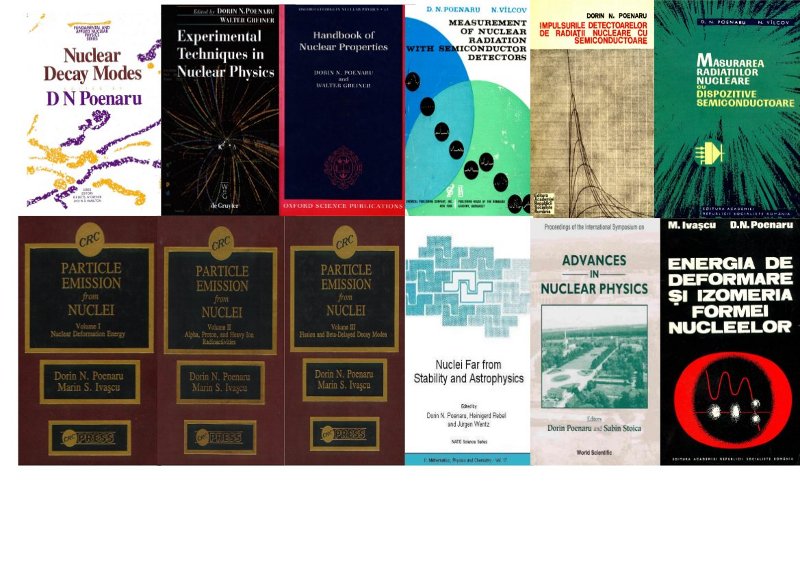
Exploratory Research Project PN-II-PCE-2011-3-0050
Supported by UEFISCDI under contract 43/05.10.2011
Decay
modes of superheavy nuclei
ABSTRACT:
There
is an impressive progress in production of superheavy elements (SH)
with
atomic numbers from 104 up to 118 by using fusion reactions. They are
identified by detecting decay modes. Only alpha decay and spontaneous
fission have been experimentally observed. We would like to take also
into account heavy particle decay (HPD) or cluster radioactivity.
Calculations are very sensitive to the released energy (Q value)
obtained as a difference from the two decay products and the parent
masses. Experimental masses (AME11) are not available for new SH with
Z>118, hence we shall use calculated masses, e.g. KTUY05 and
FRDM95. The competition between these three kinds of decay modes for
a large number of SH nuclei with Z=104-126 is expected to show a
region where the HPD will prevail. In a systematic search for HPD we
shall consider not only the emitted particles with 2<Ze<29 but
also heavier ones up to Ze=Z-82, allowing to get a doubly magic
daughter around 208Pb. Our models: analytical superasymmetric
fission, the newly developed single universal curve, and the
semiempirical relationship for alpha decay will be used to estimate
the half-lives against alpha decay, heavy particle decay, and cold
fission. Potential energy surfaces showing valleys of different decay
modes will be calculated within macroscopic-microcopic method with
shell and BCS pairing corrections based on the two center shell
model.
OBJECTIVES
Collection of a comprehensive set of experimental data on alpha decay, heavy particle decay (HPD), and spontaneous fission in four groups of parent nuclei: even-even, even-odd, odd-even and odd-odd.
Comparison of the accuracy of the theoretical models (ASAF model, UNIV and UDL universal curves, and semFIS relationship) for nuclei with measured decay modes.
Systematic search for alpha decay, HPD, and spontaneous fission decay modes of SH nuclei with Z=104-126.
Regions of nuclides in which one of the three decay modes is expected to be the dominant disintegration.
Spontaneous fission of superheavy nuclei.
RESEARCH TEAM
Prof. Dr. Dorin N. Poenaru
Dr. Radu Alexandru Gherghescu
Ms. Claudia Anghel
Ms. Nafiseh Shayan Shakib (partial time)
Funding
application
Scientific
Report 2011
Scientific
Report 2012
Honor
1
Honor2
Grigore
Moisil prize nominee
Honor3
BOOKS
